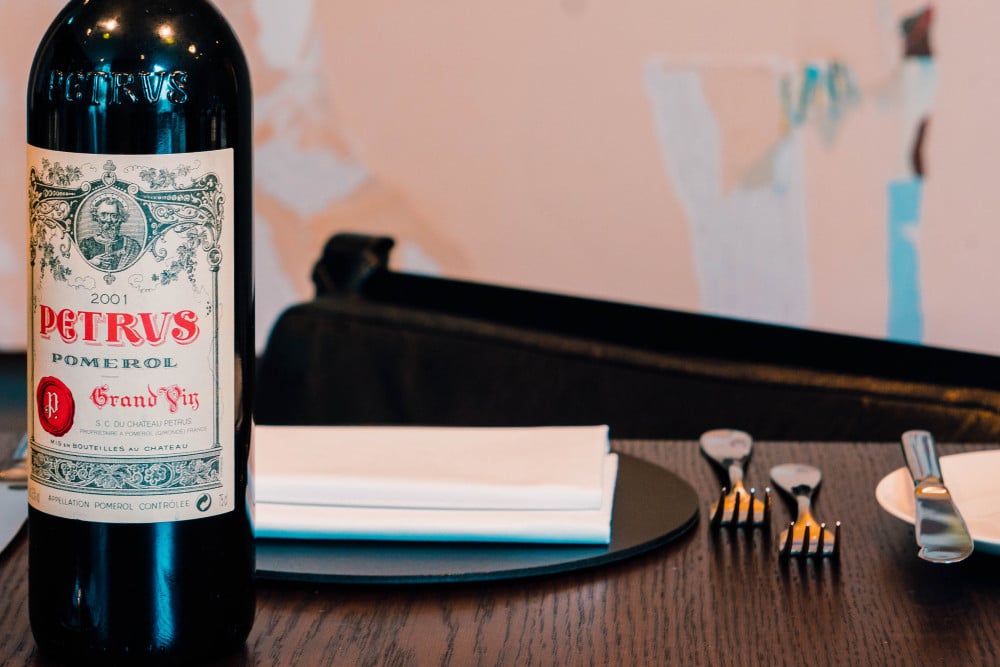Pomerol
The region is noted for producing some of the world's best Merlot. Château Petrus is undoubtedly the flagship of the Bordeaux appellation Pomerol. However, this small wine-growing region on the right bank of the Gironde has even more unique wines to offer, which shine with a fleshy character, dense complexity and a delicately spicy elegance.
The best wines from Pomerol
The region is noted for producing some of the world's best Merlot. Château Petrus is undoubtedly the flagship of the Bordeaux appellation Pomerol. However, this small wine-growing region on the right bank of the Gironde has even more unique wines to offer, which shine with a fleshy character, dense complexity and a delicately spicy elegance.
Pomerol is surrounded by noteworthy appellations like as Saint-Emilion to the east, Lalande de Pomerol to the north and Fronsac to the northwest.
Where exactly is the Pomerol appellation?
Pomerol is located about 30 kilometres northeast of Bordeaux on the right bank of the Gironde. The appellation covers just 800 hectares of vineyards and borders the famous Saint-Émilion appellation to the east. To the north, it is separated from the Lalande-de-Pomerol area by the Barbanne river.
Incidentally, the name of the appellation is derived from the Latin word ‘pomarium’, which means “apple” or ‘fruit’ in general. The name can be traced back to the ancient Romans, who cultivated the first grapes here to supply their legionaries in Britain with wine – and who were delighted with the fertile soil. However, this does not change the fact that the appellation was something of a late bloomer in terms of wine appreciation. For a long time, the wines from Pomerol were overshadowed by the prestigious wines from the Médoc and Saint-Émilion. It was only after the Second World War that the region gained international attention. The appellation owes this to personalities such as Jean-Pierre Moueix, who turned Château Petrus into an icon that is now highly sought-after around the globe.
Which grapes are grown in Pomerol?
In Pomerol, winegrowers focus exclusively on red wines. The star grape variety here is clearly Merlot. In fact, this grape is cultivated on an incredible 80% of the total vineyard area. The remaining areas are mainly planted with Cabernet Franc and small amounts of Cabernet Sauvignon. However, Cabernet Sauvignon really only plays a very minor role here. The fact that Merlot is such a big hit in Pomerol is due in part to the climate and in part to the soil. It's high time we took a closer look at both.

Climate and soil in Pomerol
Although Pomerol is located on the right bank and thus a good distance from the Atlantic Ocean, the maritime influence of the ocean is still clearly noticeable here. On the other hand, the Dordogne, one of the two tributaries of the Gironde, has virtually no influence on viticulture, as the river is simply too far away from the vineyards. But that doesn't matter, because the climate is moderate anyway. Rainfall is balanced and temperatures are fairly stable and consistent. Ideal conditions for the grapes to ripen in peace.
However, the decisive factor for the quality of Pomerol wines is to be found in the soil. It consists of a mixture of gravel, sand and iron-rich loam – the latter is also known as ‘machefer’. This soil layer gives the wines their characteristic mineral notes and excellent ageing potential. The highest points of the plateau in particular offer ideal conditions for the region's best wines.
Other regions
What does a wine from Pomerol taste like?
A typical Pomerol wine is characterised by its velvety texture and complex aromas. The wines often present themselves in deep ruby red or dark red and pamper the palate with a soft, smooth structure. Aromatically, they offer an impressive variety: from ripe cherries, plums and cassis to truffle notes and noble spices such as laurel and liquorice. The mineral notes of the soil give them additional depth.
On the palate, Pomerol wines are fleshy, juicy and dense with a fine spiciness. They combine muscular elegance with a cool freshness – a tension that makes them unique. Their ageing potential allows them to develop their full potential over decades.
What food goes well with wines from Pomerol?
Bordeaux wines are said to go best with beef and game. And that is of course also true for wines from Pomerol. Personally, we prefer saddle of venison or roast venison to steak, because the meaty texture of the wines goes best with game. Not to mention that the fruity Merlot aromas harmonise perfectly with game. However, we also enjoy serving a Pomerol with a fine duck breast with chestnuts. Especially if the wine has already matured a little.
Speaking of mature Pomerol: it also goes well with great classic cheeses such as Comté or Gruyère. And between us: due to its complexity and subtle spiciness, a Pomerol can also be enjoyed on its own in particularly contemplative moments. There is so much to discover in these wines that an evening with such a beautiful vintage will fly by.
Pomerol wine producers
With 135 wineries Pomerol's estates are mainly small and family-owned. Chateau Petrus, Chateau Lafleur, Chateau Le Pin are among the world's most renowned wineries. However, there are much more affordable price options in the region.

